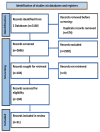Limb Salvage Surgery in Pediatric Patients with Osteosarcoma
- PMID: 39574503
- PMCID: PMC11580753
- DOI: 10.12865/CHSJ.50.03.03
Limb Salvage Surgery in Pediatric Patients with Osteosarcoma
Abstract
Osteosarcoma, although rare, is acknowledged as the most common primary bone tumor in children and adolescents. Osteosarcoma is a highly malignant osteogenic tumor that can develop in any bone, but commonly develops at the metaphysis of long bones. The positive diagnosis of osteosarcoma is based on the pathology exam, since there are no other specific diagnostic tools, and the patients with osteosarcoma are typically treated by a multidisciplinary team of specialists. The mainstream for the surgical treatment of limb osteosarcoma is the limb salvage surgery, whenever this approach does not compromise the oncological outcomes. A large spectrum of reconstructive surgical procedures is used in various centers, and to date there is no large consensus on recommending one over another. It is often that the practitioner has to decide whether the final impact on the quality of life of the child undergoing endoprosthetic replacement or osteoarticular allograft is better with the subsequent inequality of the length of the limb or the radical approach by amputation is better. Special consideration has to be given on the aspects of psychosocial wellbeing of the patients following the initial surgical intervention.
Keywords: Osteosarcoma; children; limb salvage surgery.
Copyright © 2022, Medical University Publishing House Craiova.
Conflict of interest statement
The authors have no conflict of interest to declare.
References
-
- Otttaviani G , Jaffe N . In: Pediatric and Adolescent Osteosarcoma . Jaffe N , Bruland O , Bielack S , editors. New York : Springer ; 2009 . The Epidemiology of Osteosarcoma ; pp. 15 – 32 .
-
- Gatta G, Capocaccia R, Botta L, Mallone S, De Angelis, Ardanaz E, Comber H, Dimitrova N, Leinonen MK, Siesling S, van der, Van Eycken, Visser O, Žakelj MP, Anderson LA, Bella F, Kaire I, Otter R, Stiller CA, Trama A; Burden and centralised treatment in Europe of rare tumours: results of RARECAREnet-a population-based study. Lancet Oncol. 2017;18(8):1022–1039. - PubMed
-
- Bielack S, Jürgens H, Jundt G, Kevric M, Kühne T, Reichardt P, Zoubek A, Werner M, Winkelmann W, Kotz R. Osteosarcoma: the COSS experience. Cancer Treat Res. 2009;152:289–308. - PubMed
-
- WHO Classification of Tumours Editorial Board . WHO Classification of Tumours . 5th . Lyon : IARC Publications ; 2020 . Soft Tissue and Bone Tumours ; pp. 472 – 474 .
LinkOut - more resources
Full Text Sources

